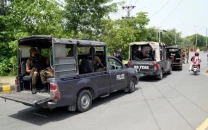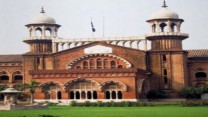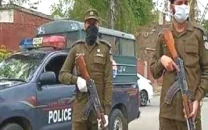Let private-public partnership provide housing
Tasneem Noorani says gap between demand and supply of houses can be met only through private-public partnership.

Let private-public partnership provide housing
He said different sets of rules and regulations were required for housing schemes for different income groups. He said there was no need for 40-feet-wide streets in schemes for low-income groups. The land could instead be used to build more houses, he added.
He said housing credit should be made available at cheaper rates. At present, he said, the House Building and Finance Corporation (HBFC) was providing loans at up to 16 per cent which was too high for low-income people. To facilitate the needy, he said, eight per cent should be the maximum mark-up.
He said while the state had clearly failed to deliver housing to the people, it could not be simply left to the private sector entirely. The market, he said, was only taking care of the housing needs of no more than 20 per cent people.
He said the government schemes were only accommodating the middle and higher income people (with incomes of more than Rs30,000 a month . He said the absolute poor, 15 per cent of the population (with incomes under Rs5,000), and the 60 per cent of population (Rs5,001-Rs10,000), were left out.
He said Khuda Ki Basti (KKB) IV – a scheme for low-income people on the outskirts of Lahore – was fully occupied within two to three years of its launch. Talking about the first KKB settlement set up in Karachi, he said the scheme was based on the informal sector ‘no-frills’ model.
He said the land grabbers often encroached upon state or private land and handed over squatter settlements to the poor who could afford no other housing. In KKB’s case, he said, land was legally owned by the poor. He said the most important task in granting the plots had been to tell apart needy from the undeserving people. He said people got plots in easy instalment plans and built houses and set up utilities’ infrastructure gradually with Saiban and several non-governmental organisations’ assistance.
To a question about the Punjab government’s recently launched low-cost housing scheme, he said at Rs800,000, an Ashiyana house was too expensive for the low-income groups. Punjab Land Development Company chairman Aslam Mughal said Ashiyana catered to people falling within Rs10,000 and Rs20,000 income bracket.
Fizzah Sajjad, a development associate at Ansar Management Company, an organisation developing houses for low-income people on Saiban’s model, said procurement of land was a major challenge. She said most low-income housing schemes in Lahore were being built in Kala Shah Kaku area. This, she said, could be damaging as it could leave the middle and higher income groups in the city centre, sending the poor away to the suburbs.
Earlier, Rescue 1122 director general, Dr Rizwan Naseer, highlighted the need to educate people on disaster management so that the damage caused by man-made disasters could be limited.
Referring to the Shah Alam fire, he said it should be taken as a lesson to adopt better policies and to enforce them effectively.
Waqas Hanif of the National Disaster Management Authority (NDMA) said that of the 161 disasters in Pakistan since 1920, 25 per cent had been in the last six years. He said preventing disasters should take priority over managing them.
Reinventing public space at MM Alam
A parking plaza and two bridges midway between Hussain Chowk and Mini Market roundabout on the MM Alam Road could transform public life at the road, said Nayha Nawab, a National College of Arts architecture student.
She displayed her work Urban Concourse on the first day of the Pakistan Urban Forum on Wednesday.
She said the idea was to reduce the load of vehicles on the road and strike a balance between the vehicular and pedestrian traffic. She said at suitable intervals on the road, covered areas could be designated for public interaction. This, she said, would help reinvigorate social life at the road. Other projects displayed in the Alhamra hallway included Beaconhouse National University students’ design for apartment buildings for low-income groups in urban areas and housing units in the flood-hit areas surrounding Multan.
Published in The Express Tribune, March 3rd, 2011.



















COMMENTS
Comments are moderated and generally will be posted if they are on-topic and not abusive.
For more information, please see our Comments FAQ